
Fiona Kendrick has kept out of the headlines since returning to Nestlé UK & Ireland 18 months ago as its new chairman and CEO. But don’t be fooled into thinking there is little going on.
On her first day back in the UK - after a five-year stint in Switzerland leading the global beverage business - Kendrick was straight into action overseeing the transfer of the group’s HQ from a 1960s Croydon skyscraper to plush new Gatwick offices. It was the ideal start for Kendrick, who likes to lead from the front.
“I met everyone on the door that day - I felt like a headmistress in a new school directing the pupils,” she says. “It’s been a good move. We had 22 floors and 40 people a floor. Now we are 1,000 people on two-and-a-half floors. It’s very open plan - which has a big impact on how we work and the culture. I can get all 1,000 people around me down on the atrium and brief them on a monthly basis.”
“If brands and people are at the heart of your business, you’ve got to make sure your marketing teams are well resourced”
Kendrick has also been busy implementing some of Nestlé’s biggest-ever manufacturing projects in the UK. Between 2011 and 2014, the UK’s largest food and drink supplier (sales are over £2.8bn) will spend more than £500m on its UK facilities, including £200m on freeze-drying and spray-drying facilities that will be operational later this year.
Connection
Kendrick has seen it all in a 34-year career with the Swiss giant, including an “invaluable” four-year stint at HQ in which she headed its global coffee operations. “You see the business strategically - not only from a category perspective but also across all the operations. That was very helpful when I came back to the UK. I now have extremely strong links with the centre and [can] really leverage that.”
In her previous role, Kendrick was focused on “making a difference” to Nestlé’s global but fragmented supply base of coffee farmers.
In this job, it’s all about the connection to the local market. “We put our factories in the markets of [highest] consumption,” she says. “We’re more decentralised than our big peer companies. Over 95% of all we sell in Nestlé UK & Ireland is produced here. If you are a high-consumption market, it makes sense to have manufacturing sites located as close as possible.”
Nestlé’s 8,000-strong UK workforce has benefited from UK investment, but with the industry facing a massive skills shortage - particularly in areas such as food science, health and safety and engineering - Kendrick is still deeply concerned. “You have an ageing workforce so it is an immediate issue we face,” she says. “I was at a meeting with a number of other companies last week, and they were talking about bringing in people from India and China. That can’t be right.”
At the same time, school leavers are arriving in the job market without the necessary skills to find a job, and Kendrick is equally downbeat about graduates, describing many as “unemployable” because of their lack of work experience.
She blames industry for not doing enough to bridge the gap between education and work, and has committed to creating 1,900 jobs and work placements, most of which are permanent roles, for young people over the next three years. Nestlé also set up a dual work and study programme with Sheffield Hallam University that gives school leavers the chance to be paid as they work towards a degree. “As a big employer we are going to stand up and put money in to make young people more employable,” says Kendrick.
Thankfully, Kendrick’s desire to recruit more young people into the business comes at a time of strong growth. Her counterparts in other big developed markets would be envious of the 6.1% growth Nestlé is achieving in the UK. Sales in France, Italy, Spain and Australia all fell and even in the US, Germany, Canada and Switzerland sales grew by less than 2%.
And, when asked whether Nestlé might emulate cutbacks to sales and marketing teams by other large food and drink companies such as Heinz, she dismisses it. “We’re certainly not seeing that. If brands and people are at the heart of your business, you’ve got to make sure your marketing teams are well resourced.”
Growth categories
It helps that some of Nestlé’s most important categories are so vibrant: in the UK’s booming bottled water market, the Buxton and San Pellegrino brands are enjoying strong double-digit growth, while our growing love affair with coffee made Dolce Gusto Nestlé’s fastest-growing brand in the UK last year.
However, the second-best performer is not so obvious: the cooking and seasoning brand Maggi - first launched in the 1890s. Asked to explain the success of the brand, Kendrick eagerly jumps to her feet to show off the latest innovations - a sheet that can be used without oil to pan fry a piece of meat; and a bag you fill with meat and a spice mix for the oven.
“These products that we call modern cooking are growing at over 40%. It’s part scratch but also offers great convenience to consumers.”
Other established brands that rarely hit the headlines, such as Carnation, are also continuing to innovate. “Carnation is loved by many, many customers, particularly cooks. We moved into savoury products late last year and it’s doing really well.”
“It’s absolutely frightening to see how many people don’t know how to cook for themselves and walk to the tills without any fruit and veg”
It has been tougher going in the confectionery market, where Nestlé’s main rivals, Cadbury and Mars, have innovated prolifically and with significant success, particularly in the form of Marvellous Creations and Teasers. Nestlé’s answer came last autumn with the launch of the Wonka chocolate brand. Described at the time as Nestlé Confectionery’s “biggest news in recent years,” six months on Kendrick is more measured about the launch.
“It’s a great brand to bring in. People have great memories and association with it. It’s a brand that comes and goes and it’s met what we set out to do for the period we bring it into the market for.”
Still, Kendrick counts innovation as one of things she’s most pleased with since becoming CEO. “We’ve done a great job on coffee and food and continue to do a lot of work in confectionery.”
She’s also happy with the strength of her team and the closer co-operation that now exists between different corners of the business. “I’m pleased with how we’ve bought our sister companies in, so we’re much closer to Purina and water for example. Infant nutrition is also now sat in the building in Gatwick.”
Understanding health needs
But there are some areas where Kendrick concedes more work needs to be done. A passionate observer of consumer behaviour, health is top of the list. “We’ve still got to understand what we can do to educate consumers on health, diet and nutrition. It’s frightening to see how many people don’t know how to cook for themselves and walk to the tills without any fruit and veg.”
Kendrick favours education over regulation, but when challenged on how Nestlé justifies its ‘health and wellness’ tagline - given that such a sizeable portion of its portfolio is so heavily skewed towards brands such as Yorkie, Toffee Crisp, Rowntrees pastilles, Nesquik and Ski yoghurts - she points to reformulation work to improve the health credentials of its products.
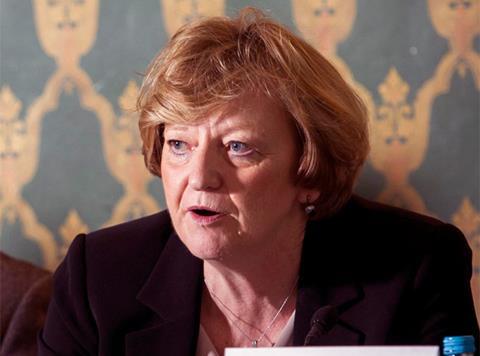
Name: Fiona Kendrick
Job title: CEO of Nestlé UK & Ireland
Family: Two sons, 25 and 21
Career background: Nestlé lifer. Spent first 28 years in the UK starting out in sales and marketing in Findus. MD of UK beverage business for eight years. Moved to Swiss HQ in 2008 to become head of global coffee before taking over as UK & Ireland CEO in 2012.
Hobbies: Keen cook
Dream meal: Stuffed monkfish, raspberry pavlova
Loves: People who have energy, curiosity and imagination, but also quality and service
Hates: Complacency, laziness and people who lack initiative
“We need to be producing the healthiest and most nutritious products in whichever categories we operate,” she says. Late last year, Nestlé reduced by 10% the sat fat content of the Kit Kat by changing the palm oil in the wafer. Almost at the same time, United Biscuits quietly announced that it was reverting to the original recipe for its McVitie’s Digestives, as the reduced fat version kept breaking and lacked ‘dunk-ability’.
Kendrick is confident this won’t happen to the reformulated Kit Kat, which passed the company’s 60/40 test, meaning 60% of consumers prefer the product to the best competitor, or the original version, in a blind test.”Taste and quality are absolutely key,” she says. “It is not something we did overnight. We spent a lot of time testing the [new Kit Kats] with consumers.”
Nestlé also “needs to do more communicate what we’re doing on sustainability,” she adds. In 2010, Greenpeace protesters dressed as orangutans scaled the old HQ in Croydon accusing it of turning a blind eye to deforestation in its use of palm oil. Nestlé now works “very closely” with Greenpeace. “We’ve made some changes to our sourcing and supply chain. We listened and felt it was the right thing to do,” she says. A Greenpeace report published in March supports this, saying Nestlé had become a “leader in the industry” by committing to a no deforestation policy, 100% traceability and publishing a global map of deforestation to help others. “There is a hunger out there from consumers to understand what we’re doing,” she adds.




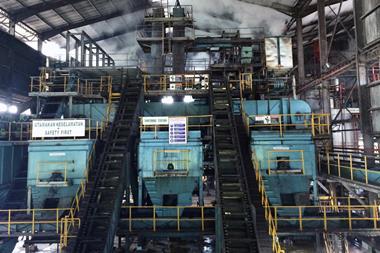

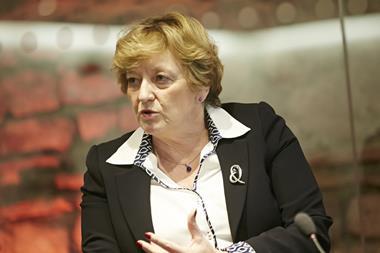



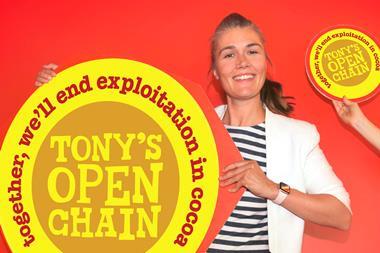

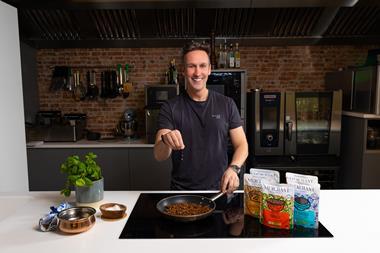
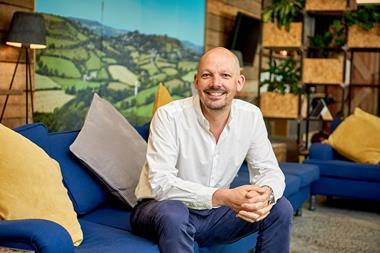

No comments yet